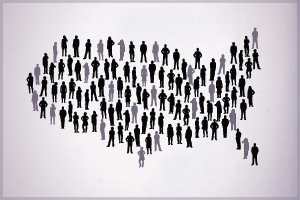This week in Ottawa there has been controversy surrounding a lecture by British lawyer Gavin Boby at the Ottawa Public Library. Boby is the founder of the Law and Freedom Foundation an organization devoted to combating an alleged Muslim threat. Specifically, Boby has worked to oppose the building of Mosques and has been accused of being affiliated with the anit-Muslim group the English Defence League (EDL).
The Ottawa Citizen published an article addressing the controversy surrounding Boby’s appearance. The article, “Muslim group seeks to block library speech by UK ‘mosquebuster’ Gavin Boby” addresses tension between ACT! For Canada and The Canadian Council on American-Islamic Relations (CAIR. CAN). “CAIR. CAN calls Boby an “anti-Muslim hate-monger” and “openly Islamophobic.”” reads the Citizen article.
The controversy is not whether Boby should be allowed to speak, but whether he should be able to use a publicly funded building as a platform from which to promote his agenda. This situation echoes back to a similar discussion over Ann Coulter’s invitation to speak at the University of Ottawa. Tensions arose over the issues of hate speech and whether a university should use student space to give voice to those who present racist and inflammatory views. Should a speaker who presents alienating and Islamophobic content be able to make use of public space? This conversation inevitably opens the can of worms that is Canadian hate speech law (an issue an I will not attempt to, and could not hope to, unravel here).
The essential flaw in Gavin Boby and countless other Islamophobe’s ‘values’ is that they rest on the false notion that there is in fact a Muslim threat. These individuals confuse Islamicism and Islam and then build their case from this shaky foundation. In another Ottawa Citizen article, “Mistaking Islamism for Islam”, this exact error is discussed. The article reads, “On the surface, the efforts of these anti-Islamist organizations appear courageous, even noble. But they end up ironically supporting the Islamist view there is no Islam other than what Islamists insist it is”. This essentializing view of Islam is detrimental to the multiculturalist and pluralistic agenda , however faulted it may be in its own way.
Those who claim that there is no global threat of Islam are are often accused of being too left, too liberal, as being Muslim sympathisers, condoners of violence, or Islamophiles. As a researcher focusing on Islam, I myself have been put in this category and resent this narrow profile. Surely there must be a place for those who are neither Islamophobes nor Islamophiles, those who neither glorify nor demonize Islam, but instead critically and factually address the issues surrounding it.
This discussion of Islam without glorification is a position I work to articulate in my research and discussions with students, colleagues, and friends. One of the most recent published articulations of this view is The Myth of the Muslim Tide by Douglas Saunders. A more brief discussion of Saunders’ can be found in this synthesised article for the Huffington Post, “10 Myths about Muslims in the West”.
Saunders’ work is refreshing honest, analytical, and unsentimental in its debunking of myths surrounding Islam. Saunders breaks down the claim that a Muslim ‘tide’ is going to wash over the UK and Europe. Saunders shows how this claim is simply untrue based on statistical data and careful research.
Saunders outlines myths such as: 1. Muslims have a higher birth rate than other religions, and will take over the world by population. 2. Immigrants from Muslim countries are going to swamp us. 3. Muslims will become a majority in European countries. 4. Muslims will become a dominant group of cultural outsiders in the United States. He then dismatles these claims by showing that the numbers in fact disprove these statements, that birth rates of Muslim immigrants tend to level out and become consistent with those rates of their new home country. That a Muslim takeover is not feasible when populations and birthrates are actually studied.
Those, like Gavin Boby, who speak out against Islam in this sensationalised manner are simply ignoring masses of statistics that directly disprove their claims. Boby’s arguments are not only insulting to Muslims, but damaging to the the larger social fabric.
Please send me your thoughts and comments.


